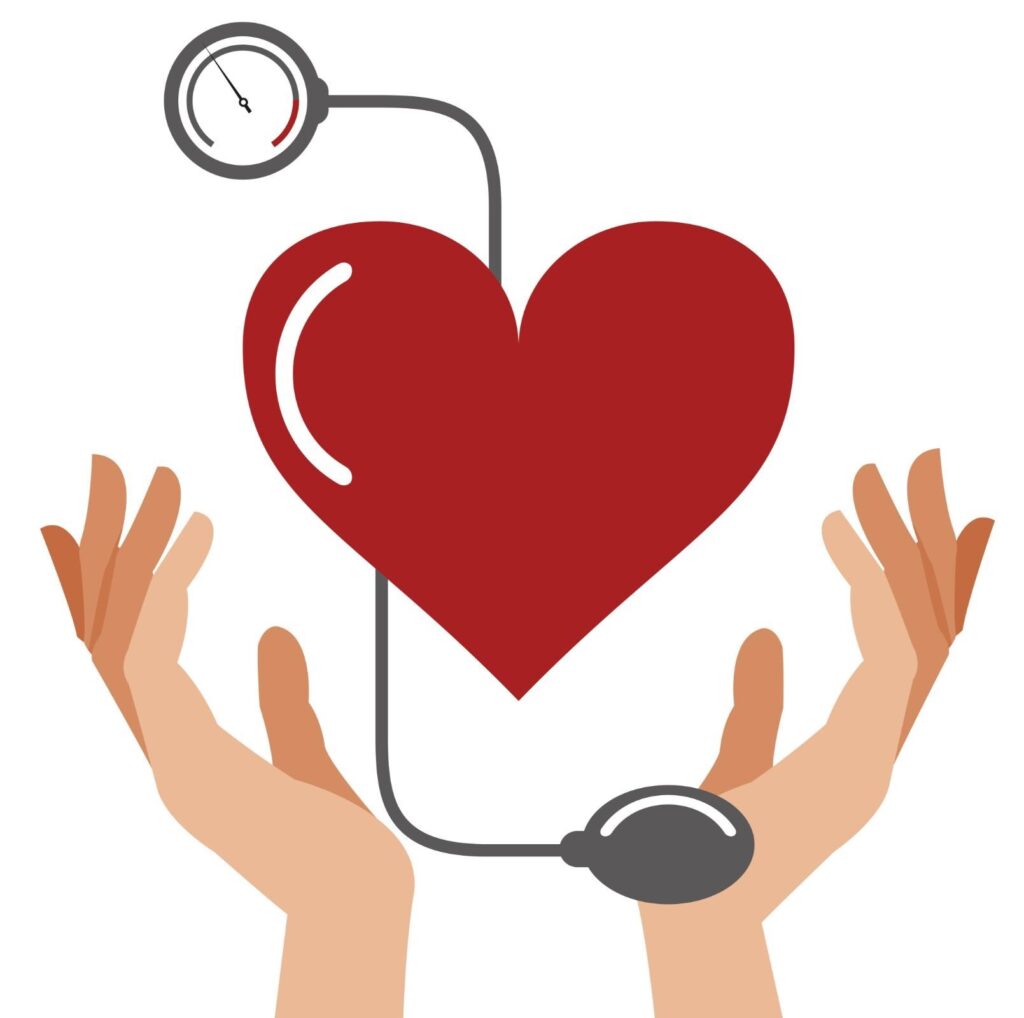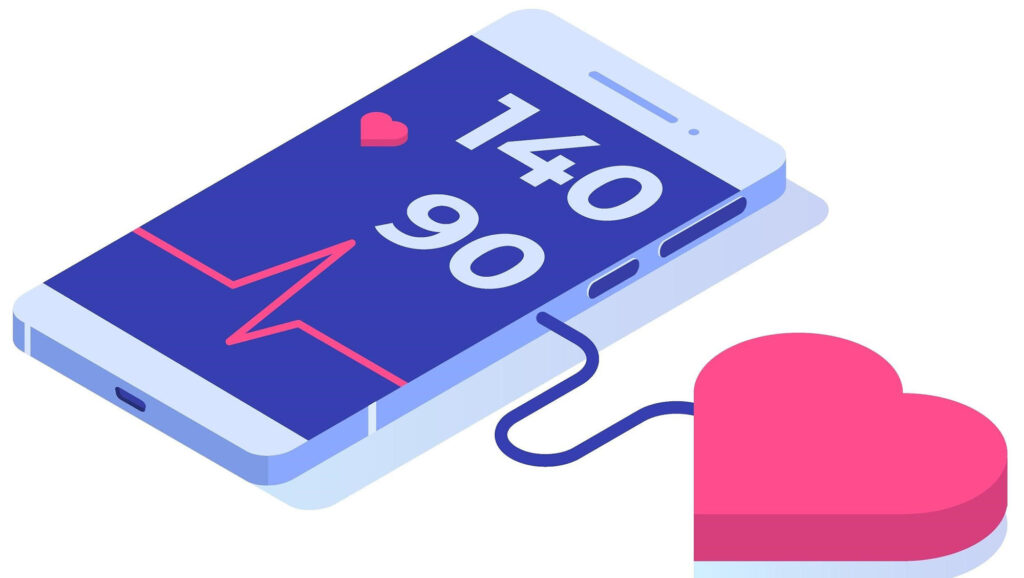When you are in your doctor’s office and they tell you what your blood pressure is. Do you wonder what those numbers mean and what is too high? What can you do to prevent or manage high blood pressure? A blood pressure reading consists of two numbers, the systolic and the diastolic numbers.
According to The National Library of medicine. High blood pressure is the cause of 7.6 million deaths worldwide each year. Beyond the death rate, a large number of people are left permanently disabled due to heart attacks and strokes caused by high blood pressure.
Systolic blood pressure
The top number is called systolic blood pressure. This number measures your heart at work. The amount of pressure on your arteries when your heart contracts and pushes blood out to your body. The normal range of systolic blood pressure is between 90 mmHg and 120 mmHg.
High Systolic blood pressure
Systolic blood pressure between 120mmHg and 129mmHg is considered elevated. Systolic blood pressure in this range is usually treated with diet, weight loss if needed, exercise, and lifestyle changes. A systolic pressure between 130 mmHg to 139 mmHg is considered high blood pressure. A blood pressure medication may be prescribed. If you have other risk factors for heart disease. A systolic pressure over 140mmHg on more than one occasion, a blood pressure-lowering medication is started.
Diastolic blood pressure
The bottom number is called the diastolic blood pressure. This number is the pressure in your arteries when your heart is resting. When your heart is between beats. Normal diastolic blood pressure is between 60 mmHg and 80 mmHg.
High Diastolic blood pressure
Diastolic pressure between 80 mmHg and 89 mmHg is considered high. Diastolic blood pressure in this range is usually treated with diet, weight loss if needed, exercise, and lifestyle changes. Diastolic pressure of 90 mmHg or higher is treated with medication.
High blood pressure crisis
You should not miss doses or stop taking your blood pressure medication. It could cause you to have a high blood pressure crisis. According to the American Heart Association. A blood pressure reading of 180/120 or higher with symptoms such as chest pain, shortness of breath, or vision changes is a medical emergency. You need to call 911 to get medical assistance immediately. If your blood pressure is this high at rest without symptoms you still should immediately get medical attention.
Modifiable risk factors
There are things that you can do to prevent high blood pressure or lower help to lower it. These things are called modifiable risk factors. Some modifiable risk factors are:
- Being overweight
- Diet
- Smoking
- Drinking alcohol
- inactivity
- Diabetes
- high cholesterol
- sleep apnea
- stress
Lowering your blood pressure
You will have to discuss with your doctor to determine if you need medication to control your blood pressure. You need to work on improving or eliminating your modifiable risk factors.
- Lose weight. As your weight rises so will your blood pressure. Losing weight can have a significant impact on lowering your blood pressure. A 10 lb. weight loss can help lower your blood pressure.
- Eat a healthy diet. The recommended diet for people with high blood pressure or those at risk is called the D.A.S.H. diet. Dietary approaches to stop hypertension. The DASH diet cookbook gives you more information and recipes.
- Quit smoking. Smoking causes your blood vessels to constrict which raises your blood pressure. Over time this causes damage to your blood vessels and they stay in a restricted state. This decreases blood flow to other areas of your body. There are many products and support out there to help you quit smoking.
- Drinking alcohol. Drinking alcohol raises your blood pressure. If you drink alcohol it should be limited to one drink per day for women and two for men.
- Inactivity. Your heart is a muscle and it needs exercise, just like the rest of your body. It is recommended by the American heart association that you get 150 minutes of moderately intense exercise per week. Those minutes should be spread out throughout the week.
- Diabetes. If you have diabetes you are at an increased risk for high blood pressure. So you and your doctor must monitor your blood pressure. That way treatment can begin as soon as it is needed.
- High cholesterol. High cholesterol can cause high blood pressure. It causes a build in your arteries that causes them to narrow and blood has a harder time flowing through them. This causes increased pressure on your artery walls. Eat a low cholesterol diet and take medication if prescribed to lower risk.
- Sleep apnea. With sleep apnea your airway becomes blocked while you are sleeping, often many times per night. This causes stress to your heart which often leads to heart disease.
- Stress. The long-term effects of stress on blood pressure are not well studied. However, when you have stressed your body releases hormones that cause your blood pressure to go up for a while.
Non-modifiable risk factors
- Race African-Americans have a higher risk of high blood pressure.
- Gender
- Age
- Family history
- History of kidney disease
Symptoms of high blood pressure
High blood pressure does not usually have symptoms which is why it is called “the silent killer”. If you have risk factors for high blood pressure you should check it at home. A blood pressure home monitor is not very expensive. It would be a great investment in your health.
If you just have the risk factors for high blood pressure and not a diagnosis of it. Check your blood pressure once a week when you are relaxed and in the same arm. Write down the numbers you get. If you have five readings that are above 128/80 mmHg. You should make an appointment to discuss your blood pressure readings with your doctor.
If you have a diagnosis of high blood pressure you may want to check it more frequently than once a week. You may want to monitor if your medication is working or may need to be adjusted. Write down your readings and take them with you when you see your doctor.
Women and high blood pressure
According to the American Heart Association, women have the following increased risks of high blood pressure:
- Women who take birth control pills are at an increased risk of high blood pressure. If you are overweight or smoke and take birth control pills that further increases your risk. Your doctor should get a baseline blood pressure before you start birth control pills.
- Some women develop gestational high blood pressure. That is high blood pressure that occurs after 20 weeks of pregnancy. The mother and baby need close monitoring if this happens. High blood pressure usually resolves after birth.
- Women have an increased risk of high blood pressure after menopause due to hormonal changes.
- Women 65 and older have a higher risk of high blood pressure.
Having high blood pressure puts you at a higher risk of having a heart attack or a stroke. These symptoms may be life-threatening. Call 911 to get immediate help. Waiting could cost you your life!
Symptoms that may be related to high blood pressure. If you are having symptoms such as:
- Shortness of breath
- Confusion
- Sweating
- Nausea
- Weakness on one side of your body.
- Difficulty forming words or speaking.
- Vision changes
- Bad headache
- Chest tightness or pain
- Pain in your left arm
- Jaw pain
- Unrelieved pain in your neck or across your back near your shoulders.


